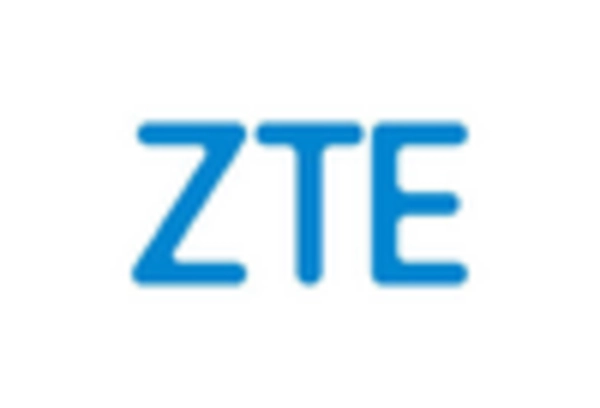Rising Consumer Expectations
The 5g customer-premises-equipment market is experiencing a surge in demand driven by rising consumer expectations for faster and more reliable internet connectivity. As households increasingly rely on high-speed internet for activities such as streaming, gaming, and remote work, the need for advanced customer-premises equipment becomes paramount. According to recent data, nearly 70% of consumers express dissatisfaction with their current internet speeds, indicating a clear market opportunity. This dissatisfaction propels consumers to seek out 5g solutions that promise enhanced performance. Furthermore, as smart home devices proliferate, the demand for robust connectivity solutions intensifies, compelling service providers to invest in 5g customer-premises equipment to meet these evolving needs.
Government Initiatives and Funding
Government initiatives and funding are pivotal in shaping the 5g customer-premises-equipment market. Various federal and state programs are designed to promote the deployment of 5g technology, which includes financial incentives for service providers to enhance their infrastructure. Recent legislative efforts have allocated billions of dollars towards expanding broadband access, particularly in underserved areas. This funding is likely to facilitate the adoption of 5g customer-premises equipment, as service providers are encouraged to invest in new technologies. Furthermore, these initiatives may lead to increased competition among providers, ultimately benefiting consumers through improved services and pricing. As such, government support appears to be a critical driver of growth in the 5g customer-premises-equipment market.
Increased Investment in Infrastructure
Investment in telecommunications infrastructure is a significant driver of the 5g customer-premises-equipment market. As service providers expand their 5g networks, they are compelled to upgrade their customer-premises equipment to ensure compatibility and optimal performance. Recent reports suggest that the US telecommunications industry is expected to invest over $100 billion in 5g infrastructure by 2026. This influx of capital is likely to stimulate demand for advanced customer-premises equipment, as providers seek to enhance their service offerings. Additionally, the competitive landscape among service providers further accelerates this investment, as companies strive to differentiate themselves through superior connectivity solutions, thereby propelling the growth of the 5g customer-premises-equipment market.
Shift Towards Remote Work and Learning
The shift towards remote work and learning has significantly impacted the 5g customer-premises-equipment market. As organizations and educational institutions increasingly adopt remote solutions, the demand for reliable and high-speed internet connectivity has surged. This trend has led to a greater emphasis on upgrading customer-premises equipment to support the needs of remote users. Data indicates that approximately 40% of the workforce is now engaged in remote work, necessitating robust internet solutions. Consequently, service providers are likely to prioritize the deployment of 5g customer-premises equipment to cater to this growing segment, thereby driving market expansion. This shift not only highlights the importance of connectivity but also underscores the evolving landscape of work and education.
Technological Advancements in Equipment
Technological advancements play a crucial role in shaping the 5g customer-premises-equipment market. Innovations in hardware and software are enabling the development of more efficient and powerful equipment that can support the high speeds and low latency associated with 5g networks. For instance, the integration of advanced antennas and signal processing technologies is enhancing the performance of customer-premises equipment. As a result, manufacturers are likely to see increased demand for their products, with projections indicating a growth rate of approximately 25% annually in the sector. This technological evolution not only improves user experience but also encourages service providers to upgrade their infrastructure, further driving the 5g customer-premises-equipment market.
















Leave a Comment